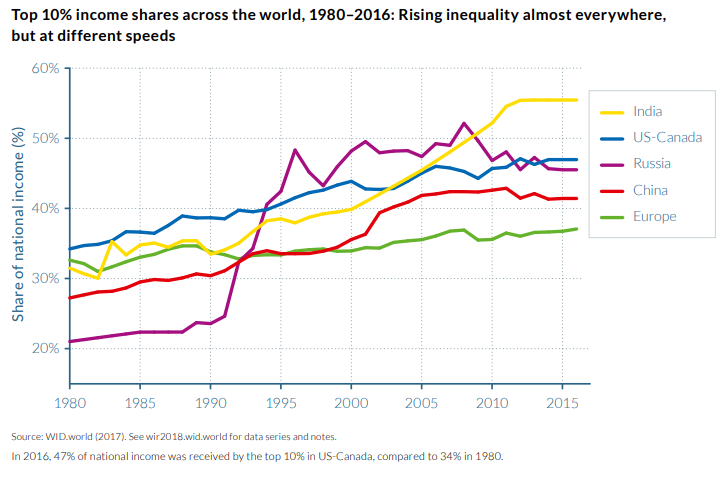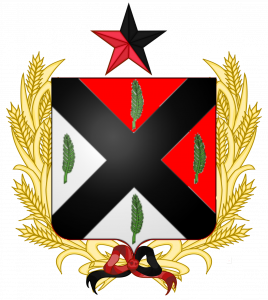(First posted on Stoke.)
In 2015, Myanmar had its first competitive and relatively free elections after 25 years. The election results gave the National League for Democracy party majority in the assembly and help make Aung San Suu Kyi, a Nobel Peace Prize winner, the State Counselor of Myanmar. The constitution adopted in 2008 instituted a form of government with a mix of military and civilian components in which the military establishment still holds a dominant role. The Tatmadaw, the main armed force in the country, appoints 25% of the seats in both legislative houses, three candidates in ministerial posts and two Vice-Presidents.
Through much of its post-colonial history Myanmar did not recognize the ethnic minorities, especially the Rohingya Muslim community, as natural citizen. The Rohingya people remained the victim of sectarian violence from Buddhist majority backed by military leaders. Starting in 2016, many reports have repeatedly confirmed violations amounting to crimes against humanity and included murder; imprisonment; enforced disappearance; torture; rape, sexual slavery and other forms of sexual violence; persecution and enslavement against Rohingya Muslims in the Rankin region by the Tatmadaw.
On August 5th 2019, the UN Fact-Finding Mission on Myanmar made public its report on “The economic interests of the Myanmar military”. It establishes in detail the degree to which Myanmar’s military, especially the Tatmadaw, has used its own businesses, foreign companies and arms deals to support its brutal operations against the ethnic minority groups that amounts to serious crimes under international law. Four Indian firms (two private and two State-owned) have financially assisted or have armed the Myanmar armed forces that contributed to crimes against humanity.
Tatmadaw’s two holding companies, Myanmar Economic Holdings Limited (MEHL) and Myanmar Economic Corporation (MEC) are major conglomerates running operations in every sector from mining to finance through, around, 120 subsidiaries. Profits from these establishments help fund Tatmadaw operations outside the state budget. There are 15 international companies that have formed Joint Venture ties with Tatmadaw, MEHL or MEC. Another 44 international firms have different forms of ties with these military owned and controlled enterprises.
In May of 2018, Indian firm Infosys became a contractor for MEHL owned Myawaddy Bank. Salil Parekh’s multinational corporation provides Myawaddy Bank digital banking software. The relation of Myawaddy and Tatmadaw are public knowledge and that its shares are held by serving and retired military personnel and related organizations such as the Veterans’ Associations. The economic tie was made in 2018, around two years after the human rights violations by the Myanmar armed forces became internationally known.
Adani Group engaged with Tatmadaw conglomerates more directly by paying MEC Rs. 20,000-cr (USD 290 million) for leasing land in Yangon for 50 years. The report notes that both, the Infosys’ and the Adani Group’s ties with enterprises controlled by Myanmar armed forces amount to financially assisting the operations that have lead to gross human rights violations and activities that have violated international humanitarian laws.
India’s State-owned defense manufacturer Hindustan Aeronautics Limited (HAL) delivered second-hand trainer aircraft to the Tatmadaw, again, in 2018. Bharat Dynamics Limited (BDL), also, provided anti-submarine torpedoes to the Myanmar Navy. The report does not say that HAL and BDL arms trade amounts to an illegal act under international law but it repeatedly says that India “should not have permitted the transfer of arms and related items to the Tatmadaw.”
One thing the report does not mention, because it was not part of its official mandate, is that at least some of the helicopters used in military operations in Rakhine State might have been supplied by India during the military dictatorship.
It must be noted that Indian media, to a significant extent, remained supportive of these “military aids” and uncritically accepted the “containing the Chinese clout” and “suppressing the counter insurgency” narrative of the Indian State.
In addition to these business ties that amount to financial aid and direct military support in the human rights violations, Indian government (through the Delhi-based private firm C&C Constructions) has undertaken the construction of Rs.1,600-cr Mizoram-Myanmar Kaladan road which ties Mizoram with seaport in conflict stricken Rakhine State – a project that passes through dense forests and in which “a substantial number of project workers died due to malaria and other mosquito-borne diseases. Such infrastructure projects might amount to what the report calls “consolidating the consequences of war crimes”.
Earlier this year, the UN human rights experts condemned India’s deportation of Rohingya as it violated the principle of non-refoulement. They said that, “the deportation of Rohingya to Myanmar speaks to a system of refugee status determination that fails to account for the ongoing, credible reports of ethnic and religious minority persecution in that country,”


